As physical therapists, we specialize in the recovery and optimization of proper throwing mechanics for athletes and other patients who are either undergoing post-operative rehabilitation or simply want to improve their throwing performance.
Specifically, an advanced exercise progression in your shoulder and upper extremity performance is key to improved throwing mechanics and the throwing cycle. By improving your mechanics, you can develop and take advantage of adequate stability, strength, and power in your shoulders in a way that reduces risk of injury.
As PRO~PT physical therapists, we’re dedicated to developing personalized plans that work for you! Physical therapy is instrumental in enhancing your range of motion and safeguarding against injuries or re-injuries. By addressing your imbalances and weaknesses through targeted exercises and hands-on techniques, we target specific areas of concern, allowing you to regain your full range of motion.
Follow along further as we dive into proper throwing mechanics and exercises for athletes!
Phases of Throwing
Breaking down the process of throwing into its individual components offers numerous benefits for athletes and individuals seeking to improve their throwing technique. By deconstructing each phase, it becomes easier to identify specific areas that require fixes and improvements. Understanding the mechanics of each movement allows for targeted adjustments, leading to more efficient and effective throws.
The throwing cycle is comprised of five distinct phases:
- Wind-up
- Stride
- Acceleration
- Deceleration
- Follow-through
This method of looking at how you use your body to throw provides valuable insights into how your body functions during these motions. It enables you to comprehend the intricacies of muscle engagement, joint movements, and coordination, facilitating better body awareness. Armed with this knowledge, you can make informed decisions about your training, identify potential sources of strain or injury, and work with physical therapists or coaches to develop a well-rounded and sustainable throwing technique.
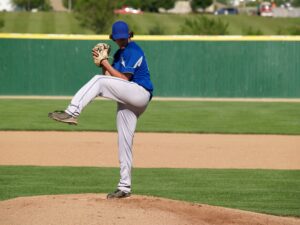
1. Wind-Up Phase
This is the beginning of the throwing motion until you lift your knee before taking a step forward. Your trunk and the leg you’re standing on (right leg for right-handed throwers and left leg for left-handed throwers) need to stabilize. They’re the main muscles working here, and your upper extremity doesn’t do much during this phase.
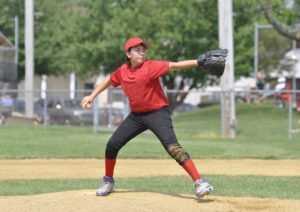
2. Stride Phase
The stride phase kicks off when you separate your hands and continues after your front foot hits the ground until your shoulder is at its maximum rotation. There is an early cocking and late cocking part of the stride phase.
In the early cocking phase, your shoulder is semi-cocked—think of it like your shoulder winding up before the big throw. The motion moves to the late cocking phase, where your shoulder will rotate as much as possible. During this time, your anterior shoulder (the front part) does the stretching work, while the posterior shoulder (the back part) gets active and shortens.
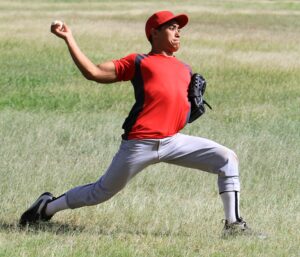
3. Acceleration Phase
This phase spans from when your shoulder’s maximum rotation (late cocking) all the way to when you release the ball. To make this happen smoothly, your shoulder blades need to stabilize, and your subscapularis muscle is the star player, accelerating your arm. Your oblique abs also join the party, helping your trunk twist along with your arm. Your triceps also get busy as your elbow shifts from bent to extended when you throw.
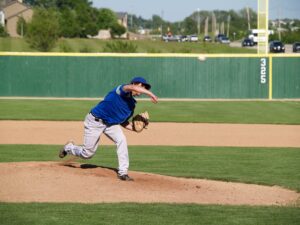
4. Deceleration Phase
The deceleration phase is essential. It starts when you release the ball and ends when your arm is at its maximum internal rotation and your elbow is fully extended. Your rotator cuff muscles work hard to control the forward movement of your arm and your biceps chip in to manage the elbow extension.
Caution! This is when injuries are most likely to happen because the muscles that are in high demand experience the most action.
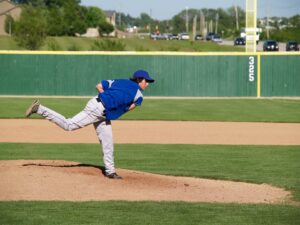
5. Follow-Through Phase
The follow-through phase is all about continuing the forward movement of your body to catch up with your throwing arm.
External + Internal Rotation Exercise for Throwing Mechanics
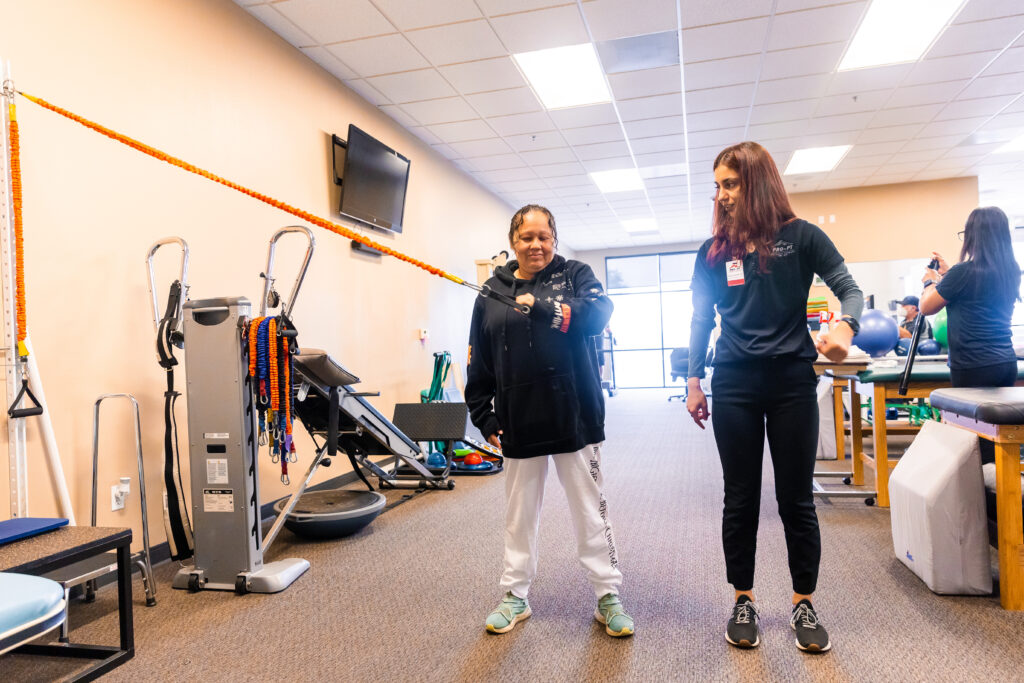
External rotation and internal rotation exercises are great for improving your throwing. These exercises mimic the throwing motion and activate the muscles needed for powerful throws. When you do the external rotation exercise, it’s like going through the stride-cocking phase of throwing. On the other hand, the internal rotation exercise works your muscles just like the acceleration and deceleration phases of throwing.
External Rotation at 90
Start with your palm facing down and your elbow bent to 90 degrees, right at shoulder height. Now, rotate your arm around the elbow, like winding up for a massive throw, until your palm is facing toward the resistance band you’re using.
Internal Rotation at 90
Get your elbow bent at 90 degrees and bring it up to shoulder height. Your palm should be facing forward, away from the resistance. Now, rotate that arm forward around the elbow, like you’re gearing up for the acceleration and deceleration phases of throwing.
How Physical Therapy Can Help Your Throwing Mechanics
Proper throwing mechanics are paramount for athletes and individuals seeking to optimize their performance and prevent injuries. Physical therapy plays a crucial role in this endeavor, offering targeted interventions to enhance your throwing mechanics and overall upper extremity function.
By breaking down the complex throwing cycle into its fundamental phases, physical therapists can identify areas that require improvement and provide personalized treatment plans tailored to each individual’s needs.
During our physical therapy sessions at PRO~PT, you will gain a deeper understanding of how your body functions during the throwing motion. Through detailed analysis and hands-on techniques, physical therapists facilitate better body awareness, helping individuals recognize and correct imbalances and weaknesses that may hinder their performance.
Beyond enhanced throwing performance, physical therapy is instrumental in post-operative rehabilitation for overhead athletes and individuals recovering from upper extremity injuries. Therapists work diligently to restore joint flexibility, muscle elasticity, and overall mobility, all vital aspects for a successful return to sport and everyday activities.
Improve Your Throwing Mechanics at PRO~PT
Request an appointment today to have one of our experienced and qualified physical therapists check out your throwing mechanics. If you have any questions or concerns regarding shoulder injuries, throwing issues/injuries, or sports injuries, you can also find and contact your local PRO~PT clinic.







